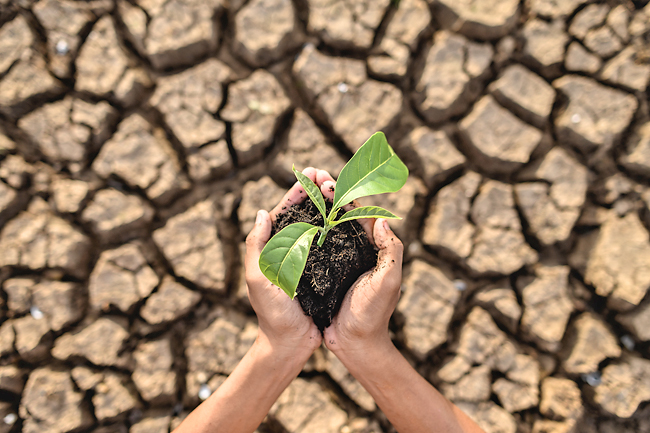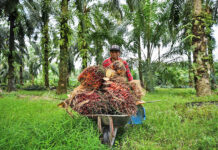Hakim Hayat
The way land resources – soil, water and biodiversity – are currently mismanaged and misused threatens the health and continued survival of many species on Earth, including our own, an evidence-based flagship Global Land Outlook 2 (GLO2) report by the United Nations Convention to Combat Desertification (UNCCD) has warned.
Up to 40 per cent of the planet’s land is degraded, directly affects half of humanity, threatens roughly half of global GDP (USD44 trillion), according to the report, while warning that if business as usual continued through 2050, there is a possibility of additional degradation of an area almost the size of South America.
It also points decision makers to hundreds of practical ways to effect local, national and regional land and ecosystem restoration. The GLO2 report, five years in development with 21 partner organisations, and with over 1,000 references, is the most comprehensive consolidation of information on the topic ever assembled.
“At no other point in modern history has humanity faced such an array of familiar and unfamiliar risks and hazards interacting in a hyper-connected and rapidly changing world,” said Executive Secretary of the UNCCD Ibrahim Thiaw in a statement on the launch of the GLO2.
“We cannot afford to underestimate the scale and impact of these existential threats,” he said.

Launched in the lead-up to the UNCCD COP15 summit in Abidjan, GLO2 lays out three scenarios for the planet’s degradation trajectory to 2050.
Under a business-as-usual scenario, an area around the size of South America will continue to degrade – with serious implications for carbon emissions, biodiversity and agricultural productivity.
As such, “business-as-usual is not a viable pathway for our continued survival and prosperity”, Thiaw said. “Conserving, restoring and using our land resources sustainably is a global imperative: one that requires action on a crisis footing.”
A land health scientist at the Center for International Forestry Research and World Agroforestry (CIFOR-ICRAF) Ermias Betemariam who was on the outlook’s steering committee, also emphasised the salience of the human-environment relationship in the findings.
“Readers will recognise the pivotal roles that land plays for people and nature,” he said. “The report highlights very clearly that we need more, faster, and better action to prevent, reduce, and restore land degradation.”
In terms of what such necessary and urgent action might look like, the report states that if we instead restore 35 per cent of our land area – five billion hectares, which is five times the global area currently pledged for restoration – agricultural productivity will increase, while carbon stocks will rise due to gains in soil carbon and reduced total emissions.
Soil water holding capacity will increase by four per cent in rainfed croplands, and while biodiversity will continue to decline, 11 per cent of total biodiversity loss will
be averted.
“Investing in large-scale land restoration is a powerful, cost-effective tool to combat desertification, soil erosion, and loss of agricultural production,” Thiaw said. “As a finite resource and our most valuable natural asset, we cannot afford to continue taking land for granted.”
Better still, if both degraded land is restored and key natural areas are conserved, an additional 83 gigatonnes of carbon would be stored compared to the baseline – equivalent to more than seven years of total current global emissions.
Around a third of the biodiversity loss projected in the baseline would be prevented, and an additional four million square kilometres of natural areas (the size of India and Pakistan) would be gained, with the largest increases expected in South and Southeast Asia and Latin America.
“Land is the operative link between biodiversity loss and climate change, and therefore must be the primary focus of any meaningful intervention to tackle these intertwined crises,” said Deputy Executive Secretary at UNCCD Andrea Meza Murillo.
“Restoring degraded land and soil provides fertile ground on which to take immediate and concerted action.” The report found that the economic returns of restoring land and reducing degradation, greenhouse gas emissions and biodiversity loss would be immense – up to USD125 or USD140 trillion a year.
The investments required to do so would be minimal in comparison to the annual USD700 billion in perverse subsidies given to the fossil fuel and agricultural industries: to meet current pledges to restore a billion hectares in the next decade, for instance, would require repurposing just USD1.6 trillion of that sum.
Given the UN Decade for Restoration (2021-2030) has just begun, Thiaw is hopeful that such a shift will be timely and actionable.
“Now is the time to harness political will, innovation, and collective action to restore our land and soil for short-term recovery and long-term regeneration to ensure a more stable and resilient future,” he said.



















































